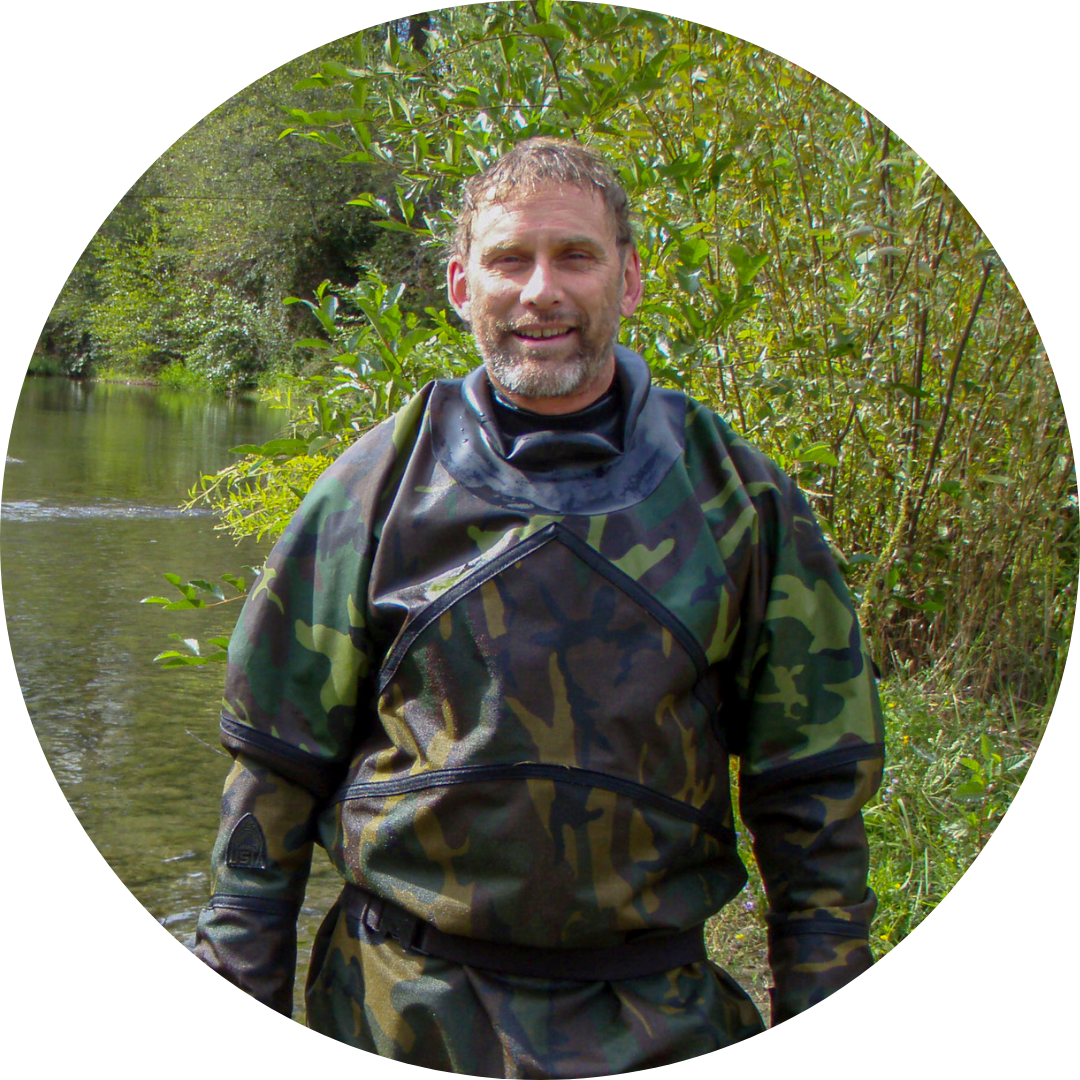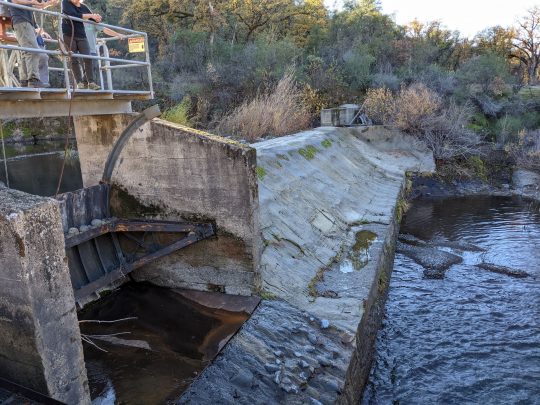Dams
THE DAMS
The Battle Creek Hydroelectric Project was originally developed to support the power demand of mineral extraction in Shasta County including Iron Mountain Mine near Redding. This project includes eight dams that block migrations of salmon and steelhead, 42 miles of diversion canals, pipelines, flumes, and ten additional dams upstream of anadromous reaches. CalTrout is working with our partners to accelerate the decommissioning process to ensure fish have full access to their historical range in the watershed and to restore the natural flow regime. The watershed was seen as an ideal drainage for hydropower generation due, in part, to its spring-fed water supply.
Owner:
Originally built by Keswick Power Company and now owned by Pacific Gas & Electric (PG&E)
Location:
Battle Creek, tributary to the Sacramento River near Red Bluff, CA
Completion Date:
Hydroelectric development began in the early 1900’s. PG&E acquired the facility in 1919 and the fifth and final powerhouse was added in 1980.
Size:
4 -51 ft in height. Water storage capacity totals 1,657 acre feet (range by reservoir 15 - 1,090 ).
Stakeholders:
Battle Creek Watershed Conservancy, U.S. Bureau of Reclamation, U.S. Fish and Wildlife Service, NOAA Fisheries, California Department of Fish and Wildlife, PG&E, California Bay-Delta Authority, California State Water Resources Control Board, The Nature Conservancy, California Wildlife Conservation Board, Trout Unlimited, American Whitewater, American Rivers, California Sportfishing Protection Alliance, and local community members.
Land Acknowledgment
The Battle Creek Dams are located on the ancestral lands of the Yana people. Today the Wintu Tribe of Redding Rancheria and the Paskenta Bank of Nomlaki Indians are the stewards of the Yana legacy.The Problem
Historically, Battle Creek was home to a diverse assemblage of anadromous and resident fishes adapted to its specific hydrology and habitats. North Fork Battle Creek is spring-fed with water originating from the flanks of Mt. Lassen and provided ideal spawning, holding and rearing habitats for winter-run Chinook Salmon. This run or ecotype is unique to California and is one of the most endangered salmon. South Fork Battle Creek hydrology is storm and snowmelt driven and has deep holding pools that provide habitats for threatened Central Valley spring-run Chinook Salmon. Both forks of Battle Creek and its tributaries also provide habitat for threatened Central Valley steelhead and Pacific Lamprey, a culturally significant fish species, as well as a host of native resident fishes. The construction of the Battle Creek Project virtually eliminated anadromy from 48 river miles (42 on the mainstem and both Forks, and 6 miles on tributaries) as well as connectivity for resident fishes.
Current Situation
PG&E was in the process of renewing a federal hydropower license before its expiration on July 31st, 2026. However, in 2020, PG&E filed notice of its intent to not file an application for a new license and no other party filed a notice of intent to assume responsibility of the project. This will likely lead to project decommissioning meaning restoration efforts that have been ongoing for over 20 years can now pivot to preparing for project decommissioning and maximizing the benefit for native fishes by full dam removal and additional instream flows. CalTrout is a member of a team that is leading the way to restore Battle Creek. In 2021, CalTrout and others completed the Eagle Canyon – Battle Creek Fish Passage Project on North Fork Battle Creek to restore access to eight miles of winter-run Chinook Salmon habitat. This project created a foundation for future progress in Battle Creek and other rivers in California. The USFWS Coleman National Fish Hatchery is the largest federal Chinook Salmon production facility in the lower 48 states. The hatchery’s fish production compensates for the loss of production in the Sacramento River caused by extensive hydropower and water delivery infrastructure. The hatchery is currently reliant on water delivery from the Battle Creek Hydroelectric Project. The U.S. Bureau of Reclamation is currently undergoing an infrastructure review with a top priority of eliminating reliance on water delivery from the Hydroelectric Project. CalTrout will continue to stay engaged in that process and work as a partner with U.S. Bureau of Reclamation, U.S. Fish and Wildlife Service and others to ensure the outcome is as wild fish friendly as possible.
Potential for Removal
Removal of several dams is already underway through the Battle Creek Salmon and Steelhead Restoration Project, which indicates high likelihood of completely restoring anadromous fish access to the area. The first dam removal occurred in 2010 with the removal of Wildcat Dam on the North Fork which opened miles of fish habitat. Efforts are now in progress to provide fish access to all historical habitats in Battle Creek by initiating the removal of all dams on the South Fork as well as providing passage beyond the remaining North Fork dams. With PG&E’s announcement to surrender their hydroelectric license, the potential for complete dam removal is promising.
Voice of Battle Creek Dams

Fish Affected:
Read more about the work we are doing on other important dam projects
- All
- _proof
- 50th
- Action Alert
- Bay Area
- Bay Area
- Blue Ribbon Waters
- California Water
- CalTrout People
- CalTrout Promo
- Campaigns
- Central Valley
- Central Valley
- Dams
- Diversity Equity Inclusion
- Eel River
- Event
- Events
- Featured
- Featured Watersheds
- Field Notes
- Fly Fishing
- From CalTrout
- Fun
- Hat Creek Restoration Project
- Imperiled Native Trout
- Initiatives
- Integrate Wild Fish & Working Landscapes
- Integrate Wild Fish & Working Landscapes
- Integrate Wild Fish and Working Landscapes
- Invasive Species
- Job Postings
- Key Initiative
- Klamath River Restoration
- Legal & Policy
- Legislation
- Migration Matters
- Mount Shasta / Klamath
- Mt. Lassen
- Mt. Lassen
- Mt. Shasta/Klamath
- News
- North Coast
- North Coast
- Podcast
- Podcast
- Press Releases
- Protect The Best
- Protect the Best
- Protect The Best
- Protect The Best
- Reconnect Habitat
- Reconnect Habitat
- Reconnect Habitat
- Regions
- Restore Estuaries
- Restore Estuaries
- Restore Estuaries
- Science
- Science Into Action
- SCRSC
- Sierra Headwaters
- Sierra Headwaters
- SOS Report
- South Coast
- South Coast
- Steelhead & Salmon
- Steward Source Water Areas
- Steward Source Water Areas
- Streamkeeper's Blog
- Trout
- Uncategorized
- video
- Voices of the Watershed
- Water Talks
- Women of CalTrout
- Youth





